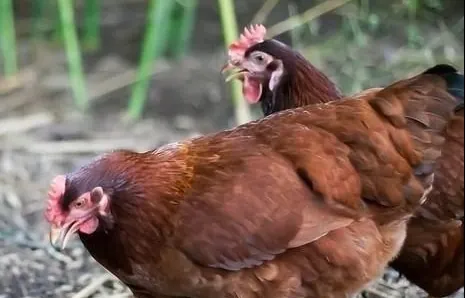
Tragic Loss in Cambodia: Third Recent Death from H5N1 Influenza Raises Alarm
2025-03-25
Author: Ming
Introduction
In a heartbreaking development, Cambodia has reported its third fatal case of human H5N1 avian influenza this year. A three-and-a-half-year-old boy from Kratie province succumbed to the virus on March 23, just one day after being hospitalized due to severe respiratory distress symptoms, including fever, cough, and difficulty breathing.
Family's Background
The young boy's family had been raising chickens, and health officials revealed that approximately five birds had died recently, with some showing signs of illness. Disturbingly, the family reportedly prepared the deceased poultry for consumption, highlighting the risks associated with handling infected animals.
Health Authorities' Response
In response to this alarming situation, health authorities are actively investigating the infection's source and tracing potential cases or individuals who may have come into contact with the young patient. The goal is to prevent any further spread of the virus within the community.
Potential Risks of H5N1
H5N1 is primarily transmitted between sick poultry, but cases of human infection remain a concern. Symptoms can escalate quickly and include fever, cough, runny nose, and severe respiratory illness. Despite only a limited number of human cases, health officials warn that the virus poses a continuous threat, particularly to vulnerable populations like children. They strongly advise against the consumption of sick or deceased birds.
Statistics and Historical Context
Since 2003, Cambodia has documented 75 cases of human infection with H5N1, tragically resulting in 46 fatalities. As the world grapples with various health crises, this incident serves as a crucial reminder of the ongoing dangers posed by zoonotic diseases. Authorities urge the public to exercise caution and report any signs of illness in poultry immediately to mitigate the risk of outbreaks.
Public Health Education
As concern grows, Cambodia continues to engage in public health education efforts, emphasizing biosecurity measures for poultry handling and emphasizing the importance of seeking medical attention at the first sign of symptoms. Stay vigilant!




 Brasil (PT)
Brasil (PT)
 Canada (EN)
Canada (EN)
 Chile (ES)
Chile (ES)
 Česko (CS)
Česko (CS)
 대한민국 (KO)
대한민국 (KO)
 España (ES)
España (ES)
 France (FR)
France (FR)
 Hong Kong (EN)
Hong Kong (EN)
 Italia (IT)
Italia (IT)
 日本 (JA)
日本 (JA)
 Magyarország (HU)
Magyarország (HU)
 Norge (NO)
Norge (NO)
 Polska (PL)
Polska (PL)
 Schweiz (DE)
Schweiz (DE)
 Singapore (EN)
Singapore (EN)
 Sverige (SV)
Sverige (SV)
 Suomi (FI)
Suomi (FI)
 Türkiye (TR)
Türkiye (TR)
 الإمارات العربية المتحدة (AR)
الإمارات العربية المتحدة (AR)